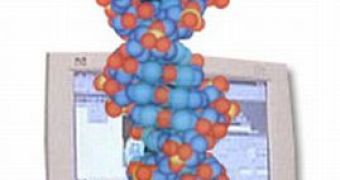Would one day our computers be swarming with bacteria?
This could happen as some researchers focused on DNA - believed to be the oldest storage medium found in nature - as the ultimate in permanent data storage.
Now researchers have reported progress in employing DNA to store text, images, music and other digital data inside the genomes of living organisms. Artificial DNA with encoded information could be added to the genome of common bacteria in order to preserve the data.
The technique was developed by a team led by Masatu Tomita at Keio University Institute for Advanced Biosciences and Keio University Shonan Fujisawa Campus, Japan and the research will be published in the April 9 issue of ACS' Biotechnology Progress, a bi-monthly journal.
The researchers say that data encoded in a bacterium's DNA, and transmitted from generation to generation, could be safely archived for hundreds of thousands of years.
The bacillus itself makes new copies of the data each time it reproduces itself, being an ideal archival storage system; the bacterium also synthesizes extra copies of the DNA, inserting it in different areas of its genome, further safeguarding the information by creating "multiple backup copies" for the lost ones. In contrast, CD-ROMs, flash memory and hard disk drives are much more vulnerable as they can easily be impaired by accidents or natural disasters.
The Japanese researchers employed a common soil bacterium, Bacillus subtilis, for copying and pasting data, encoded as artificial DNA, "thus acquiring versatile data storage and the robustness of data inheritance". The researchers managed to attach up to 100 bits of data to each organism. The team successfully employed a strain of B. subtilis to encode the message: "E=MC2 1905!", Einstein's well-known 1905 energy-mass equivalence equation.
An early use for the technique could be the creation of special markers to detect legitimate versions of pharmaceuticals. "We suggest that this simple, flexible and robust method offers a practical solution to data storage and retrieval challenges in combination with other, previously published techniques," the report states.

 14 DAY TRIAL //
14 DAY TRIAL //